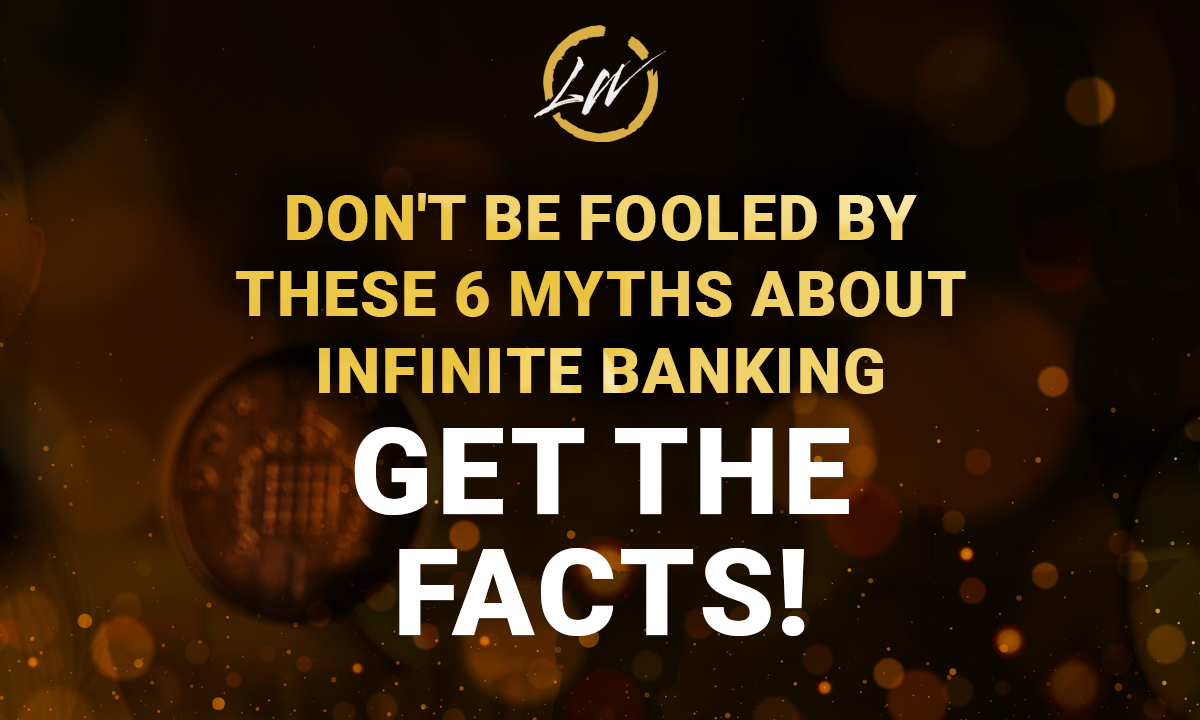If you’re not familiar with the Infinite Banking Concept (IBC) yet, it’s a financial strategy that involves using specially designed whole life insurance policies from life insurance companies to achieve a variety of financial goals. It’s a fascinating concept, but like many things in the financial world, it’s not immune to misconceptions and myths.
In this article, we’re going to tackle some of the most common myths about Infinite Banking and life insurance. Whether you’re already familiar with how Infinite Banking works or just starting to explore it, let’s clear up the confusion and get to the facts.
Myth 1: The Base Premium vs. Paid-Up Additions (PUA)
This myth revolves around the misconception that the base premium in a whole life insurance policy is just an expense, while the real value lies in Paid-Up Additions (PUAs). In reality, both the base premium and PUAs play crucial roles in a well-structured policy.
Base Premium: The base premium is the core payment you make towards your whole life policy. While it may seem like an expense, it provides the foundation for your policy. It ensures that your policy remains in force and covers the cost of insurance. Think of it as the cake in a birthday cake analogy.
Paid-Up Additions (PUAs): PUAs, on the other hand, are additional contributi壯陽藥
ons you can make to your policy, above and beyond the base premium. These contributions boost the cash value of your policy and accelerate its growth. You can think of PUAs as the frosting on the cake; they make your policy even sweeter.
Understanding the interplay between the paying premium and PUAs is essential. They work together to create a robust whole life policy that can serve as a financial tool for various purposes, including wealth accumulation, retirement planning, and more.
Myth 2: Policies Produce Poor Returns
This myth suggests that life insurance policies, particularly whole life policies, offer poor returns compared to other investment options. However, this oversimplification doesn’t capture the full picture.
Whole Life Returns: Whole life policies offer a unique combination of growth and security. While they may not match the returns of high-risk investments, they provide consistent and stable growth. These policies are known for their guarantees, which means your cash value grows steadily over time, regardless of market fluctuations.
Tax Advantages: Whole life policies also come with tax advantages. The growth within the policy is tax-deferred, meaning you won’t pay taxes on the cash value’s gains until you withdraw them. This tax efficiency can enhance your overall returns.
It’s essential to consider your financial goals and risk tolerance when evaluating the returns of a whole life policy. While they may not be the highest-yielding investment, they offer a unique blend of stability and growth, making them a valuable component of a diversified financial strategy.
Myth 3: Policy Loans Generate Profits
Some mistakenly believe that taking out policy loans from a life insurance policy automatically generates profits. However, this myth can lead to risky financial decisions.
Policy Loans: Policy loans allow you to borrow against the cash value of your life insurance policy. While they provide access to funds, they don’t inherently create wealth. Instead, policy loans should be used strategically, such as for investments or financial strategies that can potentially yield higher returns than the loan interest rate.
Responsible Use: It’s crucial to use policy loans responsibly and have a clear plan for repaying them. Relying on policy loans without a well-thought-out strategy can lead to unintended consequences, including a reduced death benefit.
Policy loans are a valuable tool when used wisely as an infinite banking strategy, but they are not a guaranteed source of profits to build wealth.
Myth 4: Paying Interest on Your Money is Stupid
This myth suggests that paying interest on your own money, such as with policy loans, is a foolish financial move. In reality, this is a common financial strategy known as leverage.
Leverage: Leverage involves borrowing money at a lower cost (e.g., policy loan interest) to invest in opportunities that can generate a higher return. It’s a strategy used by individuals and businesses alike to maximize their financial potential.
Compounding: By borrowing against your policy’s cash value and keeping your money inside the policy, you can benefit from the compounding interest of your cash value, potentially earning more than the interest you’re paying on the loan.
Leveraging your policy’s cash value through policy loans can be a smart financial move when done thoughtfully and with a clear understanding of the associated risks and benefits, which is exactly how the infinite banking concept works.
Myth 5: Loan Interest vs. Policy Rate of Return
Another myth suggests that the policy rate of return must always exceed the loan interest rate for Infinite Banking to make sense. This oversimplifies the strategy.
Flexibility: The strength of Infinite Banking lies in its flexibility. It’s not solely about comparing loan interest rates to policy returns. Instead, it’s a holistic financial strategy that can encompass various goals and financial instruments.
Diverse Financial Toolbox: Infinite Banking allows you to build a diverse financial toolbox. You can use your policy for investments, emergencies, retirement planning, and more. The rate of return on your policy is just one piece of the puzzle.
Infinite Banking provides the flexibility to tailor your strategy to your unique financial circumstances and goals, rather than being bound by a single simplistic comparison.
Myth 6: Insurance Companies Keep Cash Value
Perhaps one of the most persistent myths is the idea that insurance companies keep the cash value of your policy when you die. This is far from the truth.
Cash Value Purpose: The cash value in your policy represents the equity you’ve built up over time. Its primary purpose is to eventually equal the death benefit. The insurance company doesn’t “keep” your cash value; they use it to pay out the death benefit to your beneficiaries when the time comes.
Beneficiary Payout: When you pass away, your beneficiaries receive the death benefit, which includes the cash value and the face amount of the policy. It’s a valuable legacy that can provide financial security to your loved ones.
Understanding the true purpose of the cash value in your policy helps debunk the misconception that insurance companies “keep” it.
The True Purpose of IBC
Now that we’ve debunked these common myths about Infinite Banking, let’s discuss its true purpose. IBC isn’t primarily about the death benefit. Instead, it’s a versatile financial strategy that can help you achieve various financial goals. It provides flexibility, tax advantages, and a unique combination of security and growth.
With IBC, you can address your need for a death benefit while also using your policy as a financial tool for investments, retirement planning, and more. It’s not an either-or situation; you can have both the death benefit and financial empowerment through IBC.
In conclusion, the myths about Infinite Banking have caused unnecessary confusion and skepticism. While IBC may not be suitable for everyone, it’s a legitimate and valuable financial strategy when understood and used correctly. Don’t let misconceptions hold you back from exploring the potential benefits of IBC in your financial journey.
If you’re intrigued by IBC or have questions about it, consider seeking guidance from our Living Wealth IBC coaches. They can provide personalized advice and help you determine if IBC aligns with your financial goals.
Remember, the key to financial success is knowledge and understanding. Keep exploring, keep learning, and make informed choices on your path to financial prosperity. The world of finance is full of opportunities, and with the right knowledge, you can navigate it with confidence.
Have you heard any myths or misconceptions about the Infinite Banking Concept? Share your thoughts and questions in the comments below or go ahead and leave a comment on our E221 YouTube video. Let’s continue the conversation and help each other make informed financial decisions.
If you found this article valuable, consider subscribing to our blog for more insightful content on personal finance and financial strategies. Your support means the world to us and helps us spread financial literacy to a broader audience. Together, we can debunk myths and pave the way for financial success.






